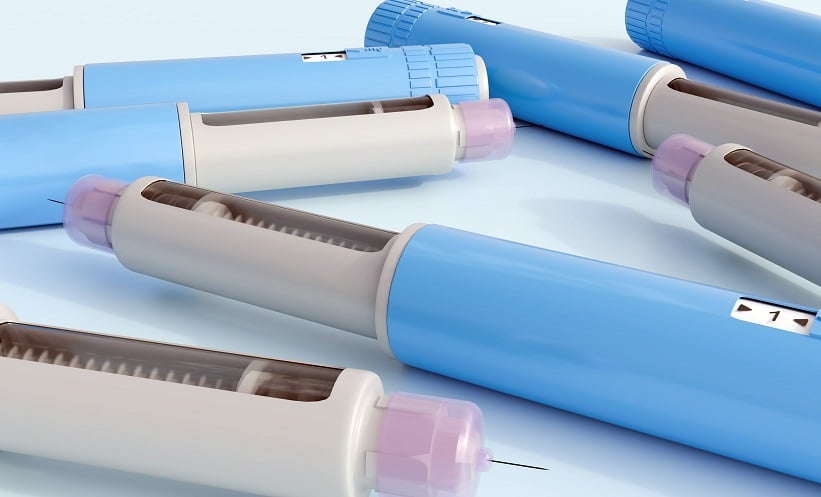Meeting Summary
This satellite symposium took place during the virtual 17th St Gallen International Breast Cancer Conference 2021. The objectives of the satellite symposium were to gain an understanding of key concepts within hormone receptor-positive (HR+), human epidermal growth factor receptor 2-negative (HER2-) early breast cancer (EBC) that impact treatment selection, such as risk of recurrence and how to define it, residual disease, burden of disease, and safety considerations. A further aim was to learn about current evidence from (neo)adjuvant cyclin-dependent kinase 4 and 6 (CDK4/6) inhibitor studies, including the interpretation of recently presented pivotal Phase III adjuvant studies of compounds in this class. Other goals were to discuss key differences between CDK4/6 inhibitors, and to understand current unmet needs and the future of HR+, HER2- EBC. Dr Prat described the three main independently prognostic variables that should be considered when determining the risk of recurrence for patients with EBC as tumour size, nodal status, and tumour biology, and that the intrinsic subtypes of breast cancer (BC) tumours have predictive value in EBC and a clinical impact on prognosis. Dr Curigliano explained that the rationale for CDK4/6 inhibitors in EBC included control of micrometastatic disease and efficacy in endocrine-resistant tumours (according to the ESO–ESMO ABC5 definition, patients with primary endocrine resistance are those who relapse within the first 2 years of adjuvant endocrine therapy [ET] or who progress within the first 6 months of first-line ET for advanced breast cancer [ABC]). He introduced the four key adjuvant CDK4/6 inhibitor studies in EBC: PALLAS and PENELOPE B for palbociclib, monarchE for abemaciclib, and NATALEE for ribociclib.
He acknowledged that in the EBC setting, more so than in the ABC setting, adverse events have a negative impact on treatment adherence and overall quality of life and may lead to treatment discontinuation. Dr Prat highlighted the unmet need in Stage II (intermediate-risk) patients and that current studies did not select patients based on molecular subtypes. Patients in PALLAS, PENELOPE-B, and monarchE were treated for ≤2 years on doses matching those in the ABC setting. Treatment in NATALEE is for 3 years at a lower dose than in ABC and the results are awaited with interest to see whether longer, lower-dose treatment improves outcomes in patients with EBC with endocrine-resistant tumours and in those with endocrine-sensitive tumours.
RECURRENCE RISK: A CLINICAL OR GENOMIC ASSESSMENT?
Features Determining Risk of Recurrence for Patients With Early Breast Cancer
Dr Prat explained that there are three main variables that should be considered when determining the risk of recurrence for patients with EBC: tumour size, nodal status, and tumour biology, with all three variables providing independent prognostic information. Tumour biology is becoming increasingly important in understanding disease recurrence and can be determined using several different methods, including the biomarker of proliferation, Ki-67, which indicates the proliferation status of tumour cells; histological grade; and, more recently, genomic (gene expression-based) assays that provide insight into the intrinsic biology of tumours (e.g., the PAM50 assay that is used to categorise breast tumours into intrinsic subtypes). These methods help to determine prognosis from a biological perspective. Dr Prat emphasised the need to integrate all these data variables to better predict patient outcomes in EBC. For example, the integration of tumour staging and Ki-67 expression levels clearly shows that high stage (Stage III) and intermediate (10–19%) or high (≥20%) Ki-67 levels are associated with poorer outcome than lower stage tumours (≤Stage II) and low levels (<10%) of Ki-67 expression in patients with HR+, HER2- EBC.1
Differences in Tumour Biology of HR+, HER2- Early Breast Cancer
Dr Prat described that the gene expression profile of HR+, HER2- disease was for many years thought to comprise two entities, luminal A and luminal B, which are dominated by genes normally expressed by luminal breast epithelial cells and for which cell proliferation is the main distinguisher between the two; however, now there is increasing realisation that there are additional, nonluminal intrinsic subtypes.2-4 Dr Prat explained that within early ER+, HER2- disease, for example, a substantial proportion of tumours (10–15%) are not luminal and are mostly HER2-enriched (HER2-E).3 He summarised these HER2-E tumours as less oestrogen-dependent, more aggressive, more proliferative, and with high expression of HER2 or HER2-related genes. Basal-like tumours, which express genes typical of myoepithelial/basal epithelial cells, are identified in a small subset of patients with HR+, HER2- disease (approximately 1–18%).4
These differences in underlying tumour biology have a clinical impact on prognosis. A retrospective study of distant relapse-free survival (DRFS) according to intrinsic subtype in patients with ER+, node-negative or node-positive BC who received local therapy and 5 years of tamoxifen (i.e., they received no chemotherapy) showed that the subtypes were prognostic.5 Long-term outcomes were clearly worse for luminal B versus luminal A tumours in patients with node-negative (DRFS at 5.0 years: 84.77% versus 95.59%; DRFS at 8.5 years: 75.30% versus 90.88%) and node-positive (DRFS at 5.0 years: 67.61% versus 84.51%; DRFS at 8.5 years: 53.37% versus 74.51%) disease.5
Risk of recurrence was highest among the patients with nonluminal tumours, with HER2-E tumours associated with particularly poor outcome in node-positive BC (DRFS at 5.0 and 8.5 years in node-negative patients: 77.2% and 73.7%, respectively; and in node-positive patients: 64.24% and 53.30%).5 These results indicate patients with nonluminal BC have a poor prognosis and do not seem to benefit from treatment with tamoxifen alone.
Dr Prat highlighted that there is a substantial proportion of patients with HR+, HER2- EBC who have poor outcomes with standard therapy (ET with or without chemotherapy) and new treatments need to be evaluated in this area.
RATIONALE FOR CDK4/6 INHIBITORS IN EARLY BREAST CANCER
Control of Micrometastatic Disease
Dr Curigliano described cellular quiescence as a mechanism that may induce metastatic dormancy6 and suggested that the mechanism of action of CDK4/6 inhibitors may include inducing a state of quiescence, thus controlling micrometastatic disease (e.g., in the bone). Indeed, CDK4 inhibition has been shown to lead to cell senescence (irreversible cell cycle arrest),7-9 with a combination of CDK4/6 inhibitors and ET expected to achieve better control of micrometastatic disease than ET alone.
Efficacy in Endocrine Therapy- Resistant Tumours
CDK4 and the HER2-E molecular subtype have been identified as markers of ET resistance.10-12 For example, biomarker analyses to investigate the correlation with progression-free survival (PFS) in baseline tumour tissues from PALOMA-2 showed that high CDK4 expression was associated with shorter median PFS than low CDK4 expression (palbociclib plus letrozole: 22.4 versus 27.6 months, p=0.127; placebo plus letrozole: 10.2 versus 21.9 months, p=0.000779).11 Furthermore, baseline and surgery Ki-67 data from the American College of Surgeons Oncology Group (ACOSOG) Z1031, in which postmenopausal women with clinical Stage II–III, ER+ BC received neoadjuvant aromatase inhibitor therapy, showed that the HER2-E subtype is less endocrine sensitive compared with luminal A and luminal B subtypes, with only a modest drop in median Ki-67 from baseline to surgery from 59.4% (range: 37.8–90.5%) to 35.7% (range: 21.6–88.2%) after 4–6 months of aromatase inhibitor therapy.12
Efficacy of CDK4/6 Inhibitors in Advanced Breast Cancer by Molecular Subtype
Dr Prat presented a retrospective pooled analysis of >1,000 patients from the MONALEESA programme,13 comprising MONALEESA-2,14-17 MONALEESA-3,18-20 and MONALEESA-7,21-23 in which intrinsic tumour subtypes (assessed using the PAM50 assay) were shown to be prognostic and, surprisingly, predictive in the metastatic setting. The addition of ribociclib to ET improved PFS in both luminal A and luminal B subtypes and in ET-resistant, HER2-E tumours.24
Survival probability was statistically significantly greater with ribociclib plus ET compared with placebo plus ET in luminal A (hazard ratio [HR]: 0.63; p<0.001) and luminal B (HR: 0.52; p<0.001) tumours.24 According to Dr Prat, the most surprising data were those in HER2-E patients, who had very poor outcome with ET alone and derived the greatest benefit from the addition of ribociclib (HR: 0.39; p<0.001). He hypothesised that the efficacy of ribociclib in HER2-E patients may be because the drug increases the endocrine sensitivity of HER2-E tumours.
Impact of (Neo)adjuvant CDK4/6 Inhibitors Plus Endocrine Therapy in Early Breast Cancer Subgroups with High-Risk Biomarkers
According to the speakers, there are some data on CDK4/6 inhibitors in the EBC setting but more data with intrinsic subtyping are needed, particularly in Phase III trials. Analysis of luminal B and Ki-67-high populations showed the potential of CDK4/6 inhibitor-based (neo)adjuvant therapy.25-27 Data from the CORALLEEN25,28 study showed that the efficacy of neoadjuvant ribociclib plus letrozole in luminal B tumours selected using PAM50 testing was similar to that with chemotherapy alone, leading to 47% and 46% of patients reaching the definition of low risk of relapse at surgery, respectively. Data from the NeoPAL26,29 study in luminal B tumours showed the residual cancer burden 0–1 endpoint after neoadjuvant chemotherapy was reached by 7% of patients with palbociclib versus 13% with chemotherapy. Further data from the monarchE27,30 study showed the 2-year invasive disease-free survival (DFS) rate was 91.3% with abemaciclib plus ET versus 86.1% with ET alone in Ki-67-high patients and 94.7% and 92.0%, respectively in Ki-67-low patients. Dr Prat outlined that the data from these three studies indicate high-risk EBC populations may benefit from CDK4/6 inhibition.
Patient Populations in Adjuvant CDK4/6 Inhibitor Studies
Dr Curigliano summarised four large adjuvant CDK4/6 inhibitor studies in EBC: PALLAS31,32 and PENELOPE-B,33,34 using palbociclib 125 mg once daily for 2 years and approximately 13 months, respectively; monarchE,30,35 investigating abemaciclib 150 mg twice daily for 2 years; and NATALEE,36,37 assessing ribociclib 400 mg once daily for 3 years (results not yet available). All studies were in pre- and postmenopausal women and all but PENELOPE-B included men. Treatment was given using a 3 weeks on/1 week off regimen in all studies apart from monarchE, in which abemaciclib was administered in a continuous regimen. Dr Curigliano noted that in NATALEE,36,37 ribociclib was used at a lower dose (400 mg/day) than that administered in the metastatic setting (600 mg/day17,19,22) for the longest duration (3 years). The other three studies used the same dose for EBC as for ABC.
The data show that monarchE30,35 demonstrated statistically significant improvement in invasive DFS with the addition of CDK4/6 inhibitors to standard of care (abemaciclib versus placebo; HR: 0.71; p=0.0009). Results for palbociclib versus placebo in PALLAS31,32 (HR: 0.93; p=0.51) and PENELOPE-B33,34 (HR: 0.93; p=0.525) were not statistically significant. Longer follow-up is needed for these abemaciclib and palbociclib studies. Results are awaited for NATALEE.36,37
Treatment Expectations and Impact of Treatment Adherence for Early Versus Advanced Breast Cancer
Treatment expectations differ for early versus advanced BC. Dr Curigliano acknowledged that in the EBC setting, more so than in the ABC setting, adverse events have a negative impact on treatment adherence and overall quality of life,38-41 and may lead to treatment discontinuation.31,33,35 A Twitter poll of clinicians (conducted by the speaker; data presented on the slides; no reference available) indicated 38.5% of patients receiving adjuvant hormone therapy for HR+, HER2- EBC are very compliant (>80%), 33.3% are mostly compliant (60–80%), 23.1% are insufficiently compliant (<60%), and compliance fluctuates in 5.1%. Interestingly, in the Breast Cancer Toxicity (CANTO) study, serum analysis showed that not all self-described ‘adherent’ patients were truly following their regimen.42 In the Twitter poll, the most common primary reason for nonadherence to treatment was symptomatic adverse events (54.1%), followed by impact on daily life (24.3%), patients do not see (perceive) the risk/urgency (16.2%), or other reasons (5.4%). Treatment adherence impacts on outcomes as shown by the Breast International Group (BIG) 1–98 trial in which low adherence (<90% compliance) to therapy (tamoxifen and letrozole) was associated with a 61% reduction in DFS.43
WHO MAY BENEFIT FROM CDK4/6 INHIBITORS IN THE EARLY BREAST CANCER SETTING?
Unmet Need in Intermediate-Risk Patients
Dr Prat pointed out that <10% of patients with EBC have Stage III (high-risk) disease with poor outcome, and around one in three patients has Stage II (intermediate-risk) disease, which has poorer prognosis than Stage I (approximately half of patients) and highlights there is an unmet need in Stage II disease as well as in Stage III given the high incidence rate of intermediate risk.44,45
Recent Data from Adjuvant CDK4/6 Inhibitor Studies in Early Breast Cancer
Dr Curigliano clarified that monarchE35 (p=0.0009), but not PALLAS46 (p=0.51) and PENELOPE-B33 (p=0.525), showed a statistically significant improvement in invasive DFS with addition of CDK4/6 inhibitors to standard of care. There are currently no data showing a benefit of CDK4/6 inhibitors in the intermediate-risk population; however, NATALEE36,37 includes Stage II patients (as well as Stage III patients) and will provide data on this subgroup.
When asked in the Twitter poll which criteria clinicians would use to determine whether a patient with HR+, HER2- EBC should receive CDK4/6 inhibitor treatment, 17.8% (of 45 respondents) voted for tumour stage only, 6.7% for tumour stage and grade, 8.9% for tumour stage and Ki-67, and 66.7% for tumour stage and molecular subtyping. Dr Prat remarked that current studies did not select patients based on molecular subtypes; however, he thought the poll results indicated the oncology community was ready to integrate tumour burden with tumour biology to better select patients who might benefit the most from a CDK4/6 inhibitor treatment strategy.
Initial Results from Adjuvant CDK4/6 Inhibitor Studies in Early Breast Cancer Focus on Early Relapse in Endocrine-Resistant Patients
According to the European School of Oncology–European Society for Medical Oncology (ESO–ESMO) ABC547 definition, patients with primary endocrine resistance are those who relapse within the first 2 years of adjuvant ET. Patients in PALLAS,31 PENELOPE-B,33 and monarchE35 were treated for ≤2 years; therefore, these studies provide data on patients with early relapse who are defined as having endocrine-resistant disease. Longer follow-up is needed to assess late relapse in endocrine-sensitive populations. In contrast, patients receive ribociclib for 3 years in NATALEE36 and the data will indicate if longer duration of treatment provides increased benefit to patients with endocrine-resistant tumours and those with endocrine-sensitive tumours.
Intrinsic Differences Between CDK4/6 Inhibitors
Dr Prat indicated that data on primary endocrine resistance and molecular subtype in ABC suggest there may be differences between CDK4/6 inhibitors. The ESO–ESMO ABC5 definition of patients with primary endocrine resistance is those who relapse within the first 2 years of adjuvant ET (as mentioned above) and patients who progress within the first 6 months of first-line ET for ABC.47 In PALOMA-3,48 palbociclib was not associated with any noticeable benefit in endocrine-resistant patients (HR 1.14), whereas there was a tendency for abemaciclib to benefit such patients in MONARCH 249 (HR: 0.686 [primary resistant], 0.787 [secondary resistant]) and for ribociclib to provide benefit for endocrine-resistant patients in MONALEESA-350,51 (HR: 0.70) and MONALEESA-751 (HR: 0.588). Median PFS for ribociclib plus ET versus placebo plus ET in the HER2-E population of MONALEESA24 was longer at 16.4 versus 5.5 months, whereas that for palbociclib versus placebo (both with ET) in PALOMA-252 was similar at 13.8 versus 11.0 months. The studies used different methods to determine tumour subtype (PAM50 in MONALEESA24 and absolute intrinsic molecular subtyping in PALOMA-252); however, a high degree of concordance was found between the two methods (76% agreement for cross-validation53). Direct trial comparisons cannot be made in the absence of well-controlled, head-to-head clinical trials; however, these results may indicate potential differences between the CDK4/6 inhibitors.
Further indication of differences between the CDK4/6 inhibitors comes from in vitro studies in which ribociclib and abemaciclib were shown to have preferential inhibition of CDK4 over CDK6, whereas palbociclib inhibited the two similarly.54 Furthermore, ribociclib and palbociclib show greater kinase selectivity for CDK4 and CDK6 than abemaciclib, and ribociclib achieves higher unbound drug concentrations in plasma than the other two CDK4/6 inhibitors.55,56
Dr Prat indicated these differences between the CDK4/6 inhibitors may impact efficacy and side effects.
CDK4/6 Inhibitor Dose in Advanced Versus Early Breast Cancer
Dr Curigliano reiterated that the daily dose of CDK4/6 inhibitor in EBC trials was the same as that for ABC trials for PALLAS,57 PENELOPE-B,33 and monarchE;35,58 however, NATALEE36 used two-thirds of the daily dose used in the ABC setting (400 mg rather than 600 mg17,19,22) and the results from this study are awaited with interest.
Approximately 40–55% of patients in EBC studies require ≥1 dose reduction because of adverse events,33,35,57,58 whereas real-world evidence indicates dose reduction is required in approximately 80% of patients.59 CDK4/6 inhibitor discontinuation appears most likely to occur within the first 6 months of treatment.35,57 Dr Curigliano suggested that using a lower dose of CDK4/6 inhibitor may improve adherence to therapy in EBC by reducing dose-dependent toxicities.
Data from studies in the ABC setting indicate CDK4/6 inhibitor dose reduction does not appear to compromise efficacy in terms of PFS for all the CDK4/6 inhibitors and in terms of overall survival for ribociclib.60-63
Factors Impacting on Adherence to Treatment in Early Breast Cancer
Dr Curigliano explained that there are many factors that may impact on adherence to treatment in patients with EBC. As shown in the Twitter poll, over half of medical oncologists (54%) believe that symptomatic adverse events may impact on treatment adherence. Reduction in patient quality of life, dosing regimen, and duration of therapy are also important.
WHAT MIGHT THE FUTURE LOOK LIKE IN EARLY BREAST CANCER?
Finally, the speakers presented their views on topics that they considered important in shaping the future of EBC, including liquid biopsy for monitoring, ongoing and future studies in EBC, sequencing of CDK4/6 inhibitors, and using CDK4/6 inhibitors as an alternative to chemotherapy.
Liquid Biopsy for Monitoring
Dr Prat considered liquid biopsy to measure circulating tumour DNA (ctDNA) in the blood a promising diagnostic tool in the advanced setting and in early disease. Studies show that ctDNA can be detected in early disease and this enables monitoring of patient response to therapy, e.g., during the neoadjuvant phase. Most importantly, Dr Prat commented, liquid biopsy after primary (loco-regional), neoadjuvant, or adjuvant therapy better enables identification of high-risk patients who are very likely to relapse. In the absence of ctDNA data, he explained, the probability of a patient relapsing is calculated based on tumour size, nodal status, and tumour biology. This calculation provides a percentage likelihood of relapse without considering the individual patient. Patient-specific ctDNA analysis using liquid biopsy enables identification of patients with ctDNA-positive disease and can be a sensitive and specific approach for disease surveillance for patients with EBC. This is a potentially useful tool to enable optimal management of patients with EBC; however, further studies are required before it is routinely implemented.
Dr Curigliano highlighted residual disease as an important prognostic factor and concurred that measurement of ctDNA could be used to identify high-risk patients who can receive an intervention. He suggested that liquid biopsy should be used as a stratification factor, with different outcomes expected for ctDNA-positive and ctDNA-negative patients.64
Current and Future Studies in Early Breast Cancer
Dr Prat emphasised that conducting studies in EBC is challenging because of the slow nature of the endpoints and the time and resources needed. Many studies are ongoing and will guide the direction of the next research step.
Dr Curigliano indicated that analysing the data in EBC is important to provide more information on the genomics and molecular biology of patients with early disease and a better understanding of the outcomes in patients with luminal A versus luminal B breast cancer. He also highlighted the paucity of information on patients with intermediate risk of recurrence and pointed out the need to clinically and genomically assess such patients and ascertain whether escalation of CDK4/6 inhibitors in these patients is useful.
Sequencing of CDK4/6 Inhibitors
According to Dr Prat, one aspect that will become increasingly important as CDK4/6 inhibitors are integrated in the treatment of EBC is whether and how to sequence these drugs following relapse. He questioned whether it is possible to retreat patients with CDK4/6 inhibitors, particularly as disease recurrence may be many years after stopping CDK4/6 inhibitors in early disease and such patients may still be sensitive to these drugs. Further clinical trials are needed to investigate this issue.
Whether and when CDK4/6 inhibitors are reintroduced in a metastatic setting following relapse after adjuvant treatment with these drugs depends on the treatment-free interval, claimed Dr Curigliano. He suggested that rechallenge with CDK4/6 inhibitors could occur following a treatment-free period of >6 months.
CDK4/6 Inhibitors as an Alternative to Chemotherapy
According to Dr Prat, an interesting strategy to consider that differs from current Phase III study approaches is to use CDK4/6 inhibitors to decrease or even avoid chemotherapy, particularly considering these inhibitors in the neoadjuvant setting have produced similar results to chemotherapy.25,26 He advised that this area needs attention and could be of great benefit for patients. Dr Curigliano noted that many patients with BC receive chemotherapy in the adjuvant setting even if there is no confirmation of eligibility for such treatment. He estimated that currently approximately 60% of patients with HR+, HER2- disease in the real-world setting (e.g., in Italy) receive chemotherapy when there is no access to genomic testing, and he advocated for adjuvant studies with escalation of CDK4/6 inhibitors and de-escalation of chemotherapy in intermediate-risk patients.
CONCLUSIONS
Dr Prat acknowledged that EBC is clearly different to ABC and that many more studies are needed in patients with early disease. He emphasised the need for detailed study of tumour response to therapies to guide patient selection; however, as it is not possible to run numerous Phase III studies in thousands of patients, investing effort in the neoadjuvant setting would help inform study design. Dr Curigliano concurred that many more studies are needed in the neoadjuvant setting and that adjuvant studies should comprise ctDNA-positive patients with high endocrine resistance.
Dr Prat concluded that risk assessment is critical, with tumour burden and biological data being key components. Predictive biomarkers are needed to assess which patients are at risk of relapse and who will benefit from treatment. He acknowledged the challenges in defining the patient populations that may benefit from treatment, and the method and duration of treatment delivery. Understanding EBC is at an early stage; however, there are new data coming (e.g., from NATALEE) and increased knowledge in this area will enable the development of strategies to reduce or circumvent chemotherapy, which will benefit patients. Dr Curigliano concluded that the future of escalation and de-escalation of treatment in EBC is strictly related to better risk stratification.

![EMJ Oncology 9 [Supplement 3] 2021 Feature Image](https://www.emjreviews.com/wp-content/uploads/2021/05/EMJ-Oncology-9-Supplement-3-2021-Feature-Image-940x563.jpg)






